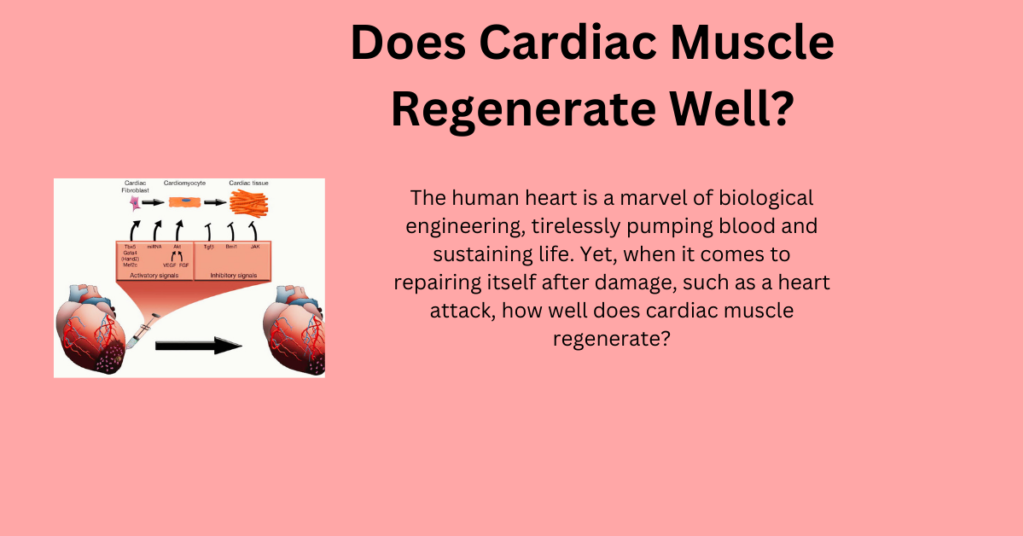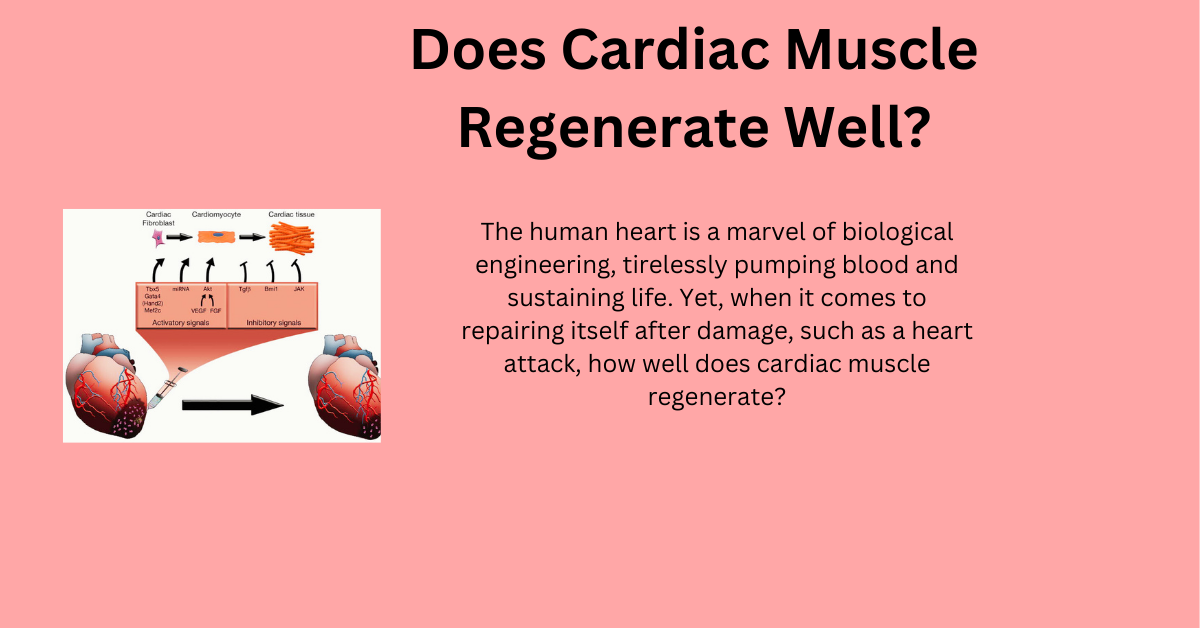Does Cardiac Muscle Regenerate Well? Exploring the Heart’s Healing Capabilities The human heart is a marvel of biological engineering, tirelessly pumping blood and sustaining life. Yet, when it comes to repairing itself after damage, such as a heart attack, how well does cardiac muscle regenerate? This question has intrigued scientists and healthcare professionals for decades. Understanding the heart’s regenerative capacity is essential to advancing treatments for cardiovascular diseases, the leading cause of death worldwide.

The Regenerative Capacity of Cardiac Muscle
Unlike certain tissues in the body, such as skin or liver, cardiac muscle has a limited ability to regenerate. This limitation is due to the nature of cardiomyocytes, the cells that make up the heart muscle. During fetal development, these cells divide and proliferate rapidly, enabling the heart to grow and develop. However, after birth, the ability of cardiomyocytes to divide diminishes significantly. Instead, they grow in size, a process known as hypertrophy, to accommodate the heart’s increasing workload.
When cardiac muscle is damaged, such as during a myocardial infarction (heart attack), the affected cardiomyocytes often die. In their place, fibrous scar tissue forms, which lacks the contractile properties of healthy cardiac muscle. This scar tissue impairs the heart’s ability to pump blood efficiently, leading to complications such as heart failure. The limited regenerative capacity of cardiac muscle is a significant challenge in cardiovascular medicine.
Why Does Cardiac Muscle Have Limited Regenerative Capacity?
Several factors contribute to the poor regenerative ability of cardiac muscle. These include:
- Cell Cycle Arrest: Postnatal cardiomyocytes exit the cell cycle, meaning they no longer divide to produce new cells.
- Scar Formation: After injury, the heart’s priority is to maintain structural integrity. Fibroblasts quickly form scar tissue to prevent rupture, but this comes at the expense of regeneration.
- Lack of Progenitor Cells: Unlike tissues with high regenerative capacity, such as the skin, the heart has very few resident progenitor cells that can differentiate into new cardiomyocytes.
- Immune Response: While inflammation is crucial for healing, excessive or prolonged inflammation can hinder regeneration and promote scar formation.
Recent Advances in Cardiac Regeneration Research
Despite these challenges, significant progress has been made in understanding and enhancing cardiac muscle regeneration. Here are some promising approaches:
- Stem Cell Therapy
Stem cells, particularly induced pluripotent stem cells (iPSCs), hold great promise for regenerating damaged cardiac muscle. iPSCs can differentiate into cardiomyocytes, which can then be transplanted into the damaged heart. Early studies have shown that these cells can integrate with existing cardiac tissue and improve heart function. However, challenges such as immune rejection, arrhythmias, and scalability remain.
- Cardiomyocyte Proliferation
Researchers are exploring ways to reactivate the cell cycle in mature cardiomyocytes. Certain proteins, such as cyclins and cyclin-dependent kinases, have been shown to stimulate cell division in animal models. By promoting cardiomyocyte proliferation, scientists aim to regenerate functional cardiac muscle and reduce scar tissue formation.
- Gene Therapy
Gene editing technologies, such as CRISPR-Cas9, offer another avenue for promoting cardiac regeneration. By targeting specific genes involved in cell cycle regulation or scar formation, researchers can enhance the heart’s natural healing processes. For example, inhibiting the gene responsible for scar tissue formation could improve the regeneration of functional cardiac muscle.
- Biomaterials and Tissue Engineering
Biomaterials, such as hydrogels and scaffolds, are being developed to support cardiac regeneration. These materials can deliver growth factors, stem cells, or drugs directly to the damaged area. Tissue engineering approaches aim to create bioengineered heart tissue that can replace damaged sections of the heart, restoring its function.
- Exercise and Lifestyle Interventions
Emerging evidence suggests that regular physical activity can promote the proliferation of cardiomyocytes and improve cardiac function after injury. Exercise may stimulate the release of growth factors and enhance blood flow, creating an environment conducive to regeneration. Combined with other therapeutic approaches, lifestyle interventions could play a critical role in cardiac muscle regeneration.
Challenges and Limitations
While these advancements are promising, several hurdles must be overcome before they can become widely available treatments:
- Safety and Efficacy: Ensuring that new therapies are both safe and effective in humans is paramount. For instance, uncontrolled cardiomyocyte proliferation could lead to tumors or arrhythmias.
- Delivery Methods: Finding effective ways to deliver cells, genes, or biomaterials to the heart remains a challenge. Non-invasive or minimally invasive techniques are particularly desirable.
- Cost and Accessibility: Advanced therapies, such as stem cell treatments and gene editing, are often expensive and may not be accessible to all patients. Efforts are needed to reduce costs and improve scalability.
Future Directions
The field of cardiac regeneration is evolving rapidly, with new discoveries paving the way for innovative treatments. One exciting area of research is the role of extracellular vesicles, such as exosomes, in heart repair. These vesicles carry proteins, lipids, and RNA that can influence cell behavior and promote regeneration. Harnessing their potential could lead to novel therapies.
Another promising direction is the use of “smart” biomaterials that respond to the heart’s mechanical and electrical signals. These materials could dynamically adapt to the heart’s needs, enhancing the integration and function of transplanted cells or tissues.
Conclusion
So, does cardiac muscle regenerate well? The answer, for now, is that it doesn’t regenerate as effectively as other tissues. However, the landscape is changing. Advances in stem cell therapy, gene editing, biomaterials, and other innovative approaches offer hope for improving the heart’s regenerative capacity. While challenges remain, the future of cardiac regeneration is bright, with the potential to transform the treatment of heart disease and improve millions of lives worldwide.
As research continues to unravel the mysteries of the heart’s healing capabilities, one thing is certain: the quest to enhance cardiac muscle regeneration is a journey worth undertaking, offering the promise of a healthier and longer life for patients with cardiovascular diseases.

